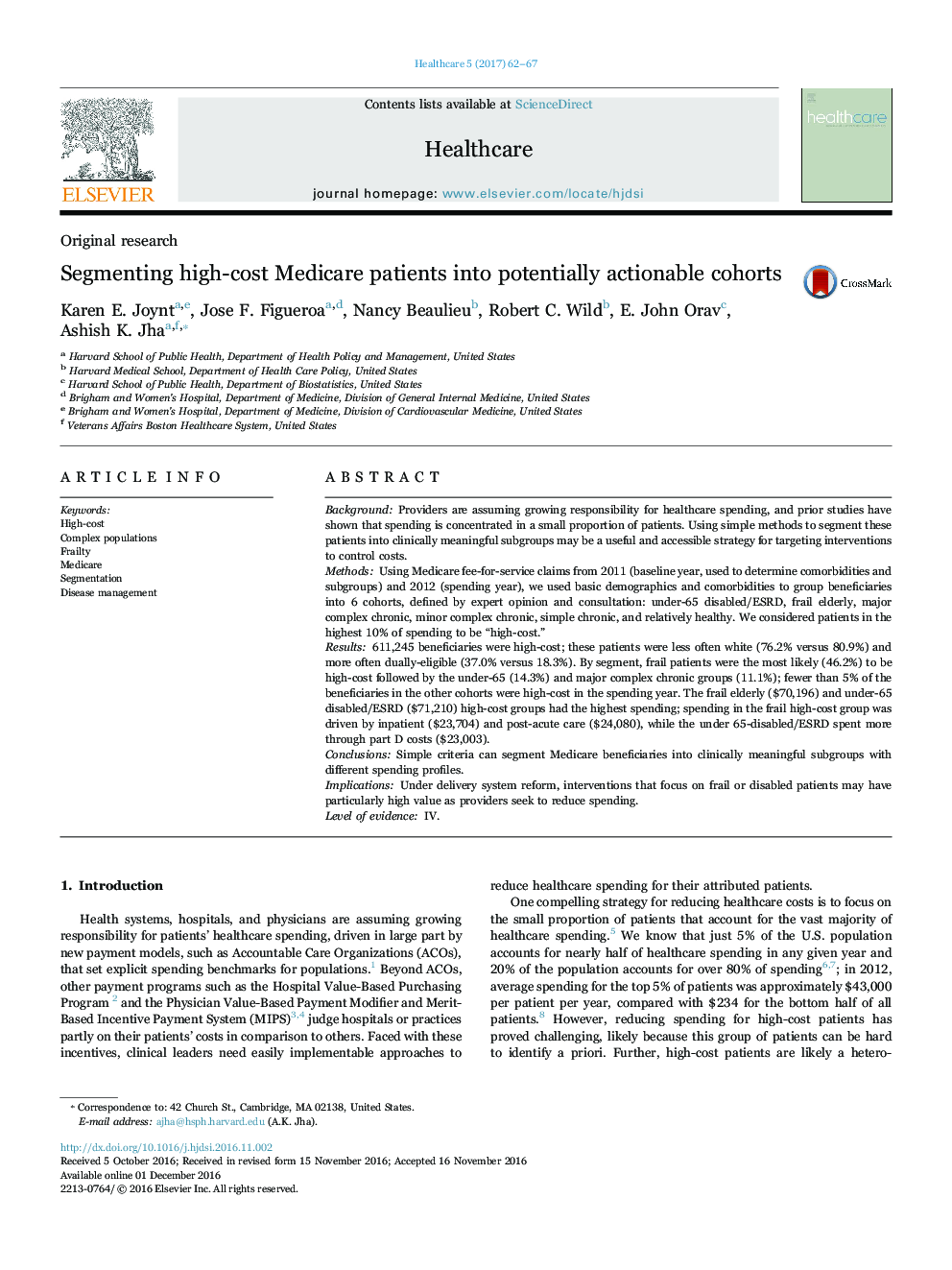| Article ID | Journal | Published Year | Pages | File Type |
|---|---|---|---|---|
| 4966269 | Healthcare | 2017 | 6 Pages |
BackgroundProviders are assuming growing responsibility for healthcare spending, and prior studies have shown that spending is concentrated in a small proportion of patients. Using simple methods to segment these patients into clinically meaningful subgroups may be a useful and accessible strategy for targeting interventions to control costs.MethodsUsing Medicare fee-for-service claims from 2011 (baseline year, used to determine comorbidities and subgroups) and 2012 (spending year), we used basic demographics and comorbidities to group beneficiaries into 6 cohorts, defined by expert opinion and consultation: under-65 disabled/ESRD, frail elderly, major complex chronic, minor complex chronic, simple chronic, and relatively healthy. We considered patients in the highest 10% of spending to be “high-cost.”Results611,245 beneficiaries were high-cost; these patients were less often white (76.2% versus 80.9%) and more often dually-eligible (37.0% versus 18.3%). By segment, frail patients were the most likely (46.2%) to be high-cost followed by the under-65 (14.3%) and major complex chronic groups (11.1%); fewer than 5% of the beneficiaries in the other cohorts were high-cost in the spending year. The frail elderly ($70,196) and under-65 disabled/ESRD ($71,210) high-cost groups had the highest spending; spending in the frail high-cost group was driven by inpatient ($23,704) and post-acute care ($24,080), while the under 65-disabled/ESRD spent more through part D costs ($23,003).ConclusionsSimple criteria can segment Medicare beneficiaries into clinically meaningful subgroups with different spending profiles.ImplicationsUnder delivery system reform, interventions that focus on frail or disabled patients may have particularly high value as providers seek to reduce spending.Level of evidenceIV.
